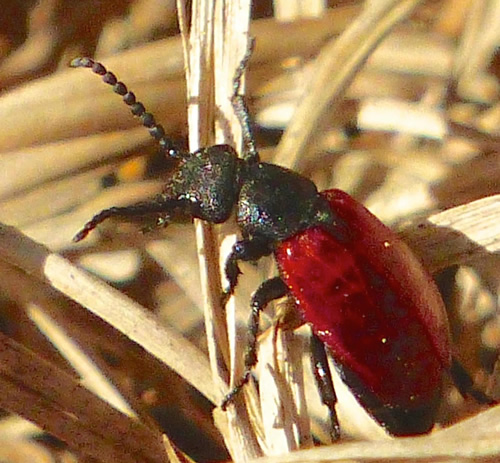Blister Beetle – 4/3/14
Observer: Paul Lauenstein
Observation Date: 4/3/14
Observation Time: 2:45 p.m.
Observation Location: Gavins Pond area
Common Name: Blister Beetle
Scientific Name: Tricrania sanguinipennis
Comments: Blister beetles receive their common name from the ability of their hemolymph to produce blistering on contact with human skin. Hemolymph is often exuded copiously by reflexive bleeding when an adult beetle is pressed or rubbed. Blisters commonly occur on the neck and arms, as the result of exposure to adult beetles attracted to outdoor lights at night.
The blistering agent is cantharidin, an odorless terpene (exo-1,2-cis-dimethyl-3,6-ep- oxyhexahydro-phthalic anhydride) occurring elsewhere only in beetles of the family Oedemeridae (Arnett 2008). Cantharidin or cantharides (dried, pulverized bodies of adult beetles) was once employed extensively in human and veterinary medicine, primarily as a vesicant and irritant and is still used in the U.S. as the active ingredient in a proprietary wart remover (Epstein and Epstein 1960, Kartal Durmazlar et al, 2009). Taken internally or absorbed through the skin, cantharidin is highly toxic to mammals. There is an extensive literature dealing with its reputed aphrodisiacal properties and numerous reports of human poisonings, both accidental and deliberate. Source: http://entnemdept.ufl.edu/creatures/urban/medical/blister_beetles.htm
More Information: PBase


